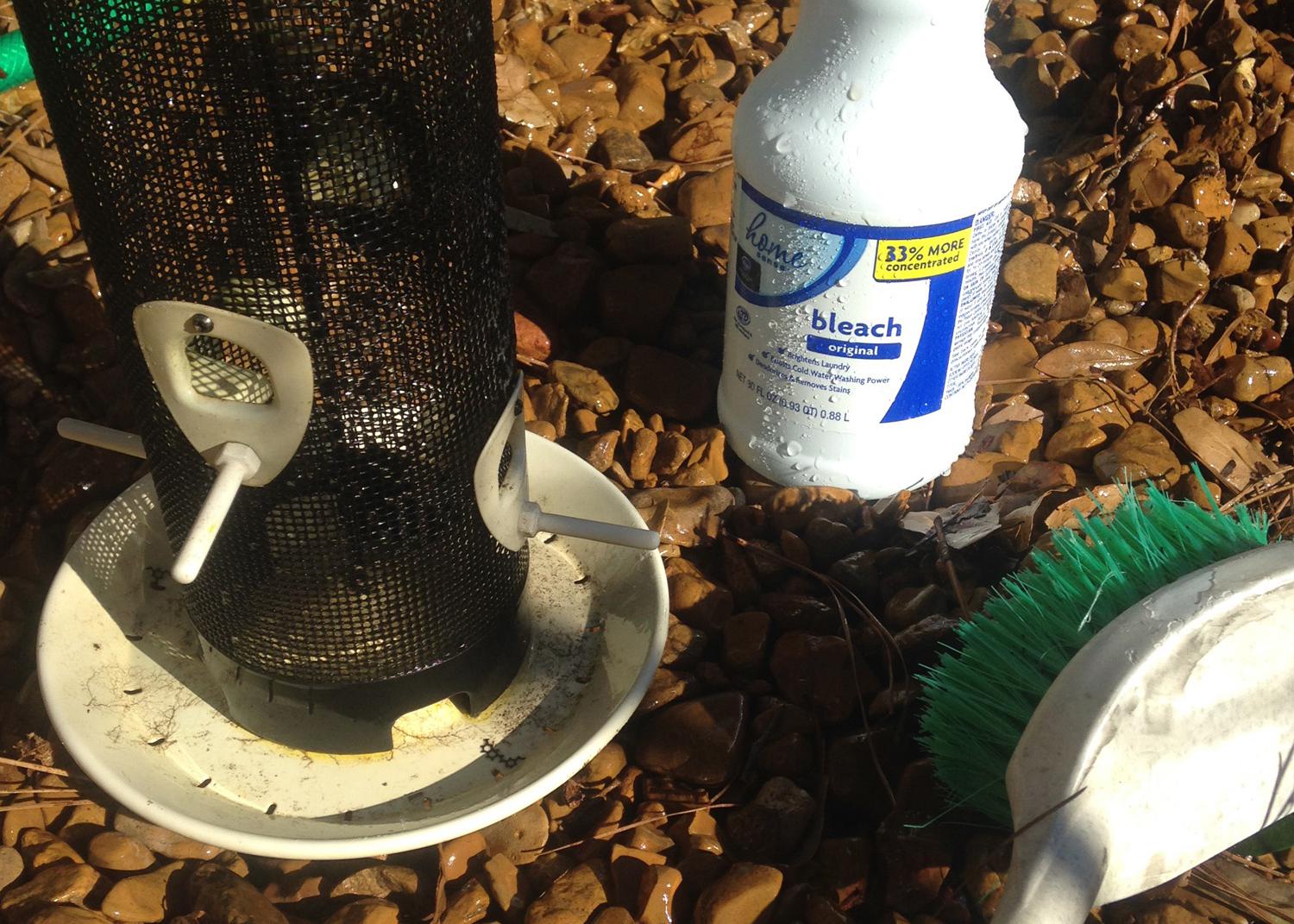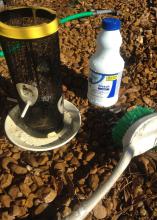Information Possibly Outdated
The information presented on this page was originally released on September 29, 2021. It may not be outdated, but please search our site for more current information. If you plan to quote or reference this information in a publication, please check with the Extension specialist or author before proceeding.
Follow best practices with backyard bird feeders
MSU Extension Service
RAYMOND, Miss. -- After an active year for disease-related wild bird deaths in the U.S., people should follow best practices when providing backyard feeders and water sources for wild birds this fall and winter.
Disease in wildlife populations is normal and is one of the many mechanisms that regulate wildlife populations. Many things can cause diseases in wildlife, including viruses, bacteria and parasites, along with exposure to toxic substances.
The prevalence of infectious diseases is often influenced by environmental stressors like weather, change in or loss of habitat, and reduced access to food and water. For example, harsh winters can reduce food and water availability for wild birds, causing them to concentrate at higher-than-normal levels at backyard feeders and water sources. Food and water can become contaminated with disease-causing organisms from their feces and spread easily among local bird populations.
This is what led to a salmonella outbreak among songbirds and 19 humans earlier this year across eight states. Humans contracted it through contact with contaminated bird feeders, dead birds or pets that had access to areas frequented by birds. One human case was confirmed in Mississippi. No bird cases were confirmed due to a lack of funding for surveillance.
In May, reports of sick and dying birds began streaming into to wildlife agencies in the states of Delaware, Indiana, Kentucky, Maryland, New Jersey, Ohio, Pennsylvania and West Virginia, as well as the District of Columbia. Citizens reported finding mainly juvenile birds with crusty eyes, tremors and paralysis. As a result, these states and others issued orders against wildlife feeding.
Nearly as fast as the reports came in May and June, they dissipated to nearly zero by September.
Many federal and state agencies and laboratories have been involved in trying to identify the illness. All major known bird-related diseases like West Nile, salmonella, avian influenza and others have been ruled out. Wildlife disease specialists are not sure how it was transmitted or whether it was caused by a disease organism or something toxic in the environment.
While we wait for more information and answers to these important questions regarding the mysterious illness, we should take time to reflect on best management practices related to feeding wild birds in our backyards.
Follow CDC guidelines for cleaning and disinfecting bird feeders and water sources for wild birds:
• Clean bird feeders outside with warm, soapy water. Rinse well. If cleaning bird feeders inside, use a bathtub, or a laundry sink, and immediately clean and disinfect it. Never use the kitchen sink or any other area where food is prepared or stored.
• Soak bird feeders in a bleach solution of 9 parts water to 1 part bleach for 10 minutes.
• Rinse well and let dry.
• Wash your hands well after cleaning feeders.
• The frequency of cleaning should be determined by the amount of use. If feces are present, it’s time to clean.
Here are some other best practices:
• Put out only as much seed as will be consumed in a day. Discard wet seed into a garbage receptacle. Do not dump it on the ground.
• In addition to cleaning feeders and bird baths regularly, rotate the feeder station’s locations in your yard even if birds appear healthy. If rotating is not an option, consider not feeding for two to four weeks to give these areas a rest.
• To minimize the possibility of pets spreading salmonella to humans, the CDC recommends keeping pets away from bird feeders, bird baths and the areas underneath them.
• People should always wash their hands with soap and water after handling bird feeders, bird baths and dead birds and after touching pets or their toys, food and bowls.
These practices are particularly important during fall migration and winter as feeder use increases dramatically this time of year.

Editor’s Note: Extension Outdoors is a column authored by several different experts in the Mississippi State University Extension Service.
Released: September 29, 2021
Contacts: Dr. Adam Rohnke
News Story Contact
Assistant Extension Professor
Urban Wildlife
Wildlife and Fisheries Enterprises
Mississippi Master Naturalist Program
Your Extension Experts
Related News
January 6, 2022
November 24, 2021
November 3, 2021
October 28, 2021
October 21, 2021
Pages
Related Publications
Publication Number: P2310
Publication Number: P2855
Publication Number: P2661
Publication Number: P2525
Publication Number: P3102








